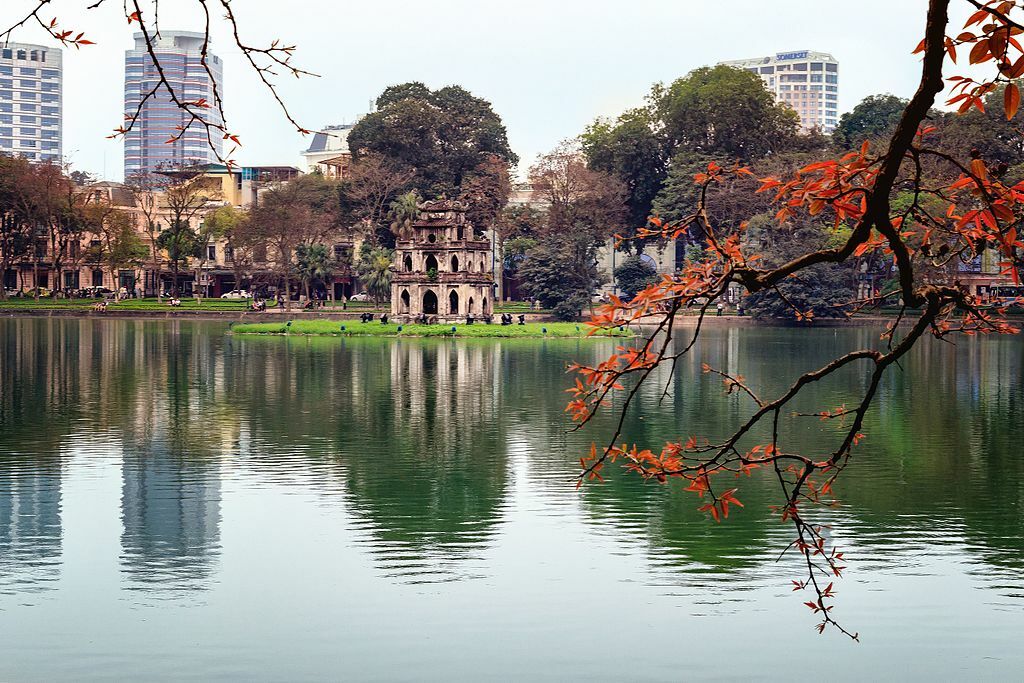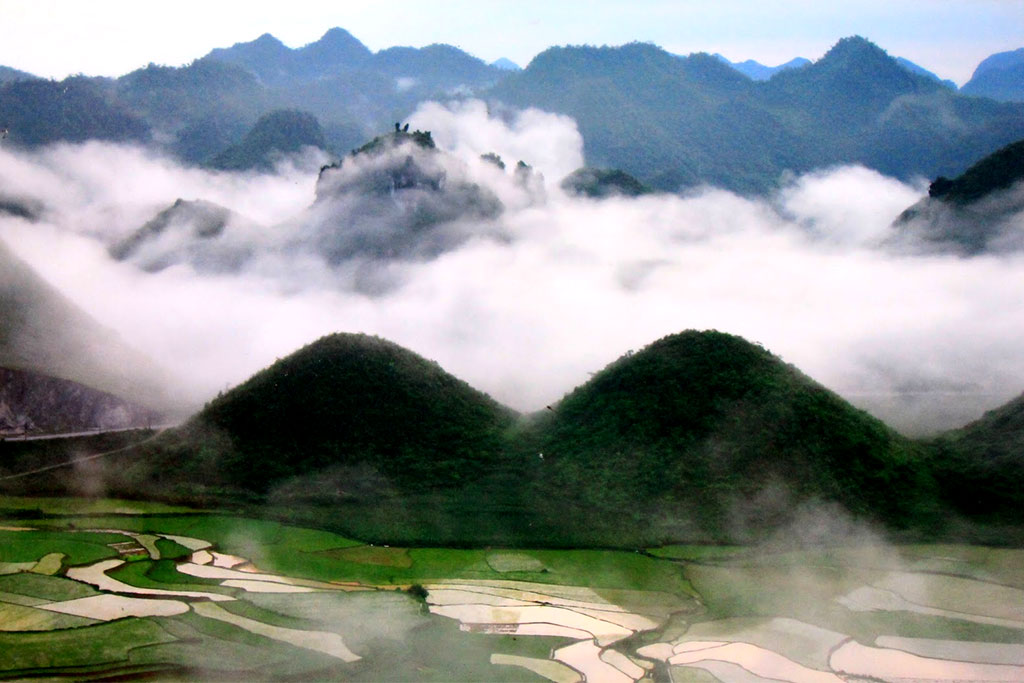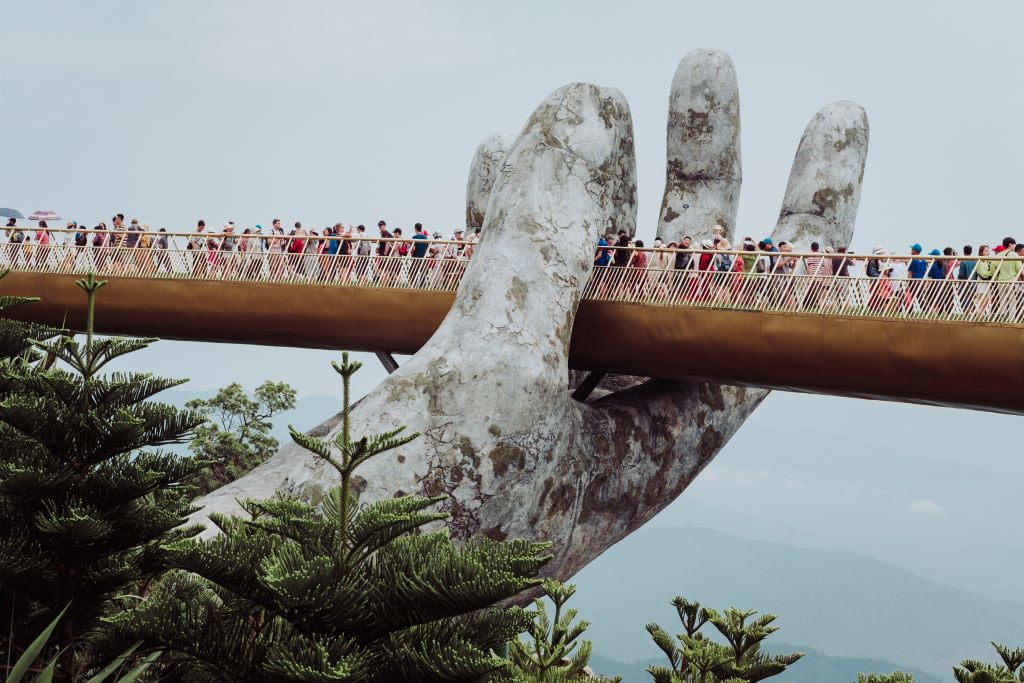You want to visit Mu Cang Chai in the ripe rice season. You want to hunt clouds in Ta Xua. You want to chill in a luxury yacht on a cool night. All you want will come true if you choose the right time to visit Vietnam. That is why we write this article for you!
The best time to visit Vietnam is from November to April. If you travel with family and children, there are various entertaining and exciting activities to experience in Vietnam, such as exploring the breathtaking Ha Long Bay in the north, visiting the charming ancient town of Hoi An in central Vietnam, or relaxing on the picturesque beaches of Phu Quoc Island in the south. Children can also participate in activities such as learning how to make traditional lanterns, trying local cuisine, or visiting the famous Cu Chi Tunnels in Ho Chi Minh City.
Vietnam has two main tourism seasons: peak season and low season. Additionally, Vietnam also has periods called the shoulder season. Each season has its own advantages and drawbacks, and it’s important to consider these when planning your trip to Vietnam. In this guide, we will explore the different tourist seasons in Vietnam and provide tips and recommendations for the best time to visit Vietnam based on your travel goals and preferences.
The peak season of domestic tourism in Vietnam is from June to August and during the Tet holiday (Vietnamese New Year), which usually falls in January or February. During this time, many Vietnamese people travel to popular tourist destinations across the country, such as Ha Long Bay, Sapa, and Da Nang. The weather during the summer months is hot and humid, but it is also the season of many festivals and cultural events that attract visitors from all over the world. The biggest festival is the Tet holiday, which is a time of family reunions, feasting, and fireworks. Other festivals during this time include the Hue Festival, the Da Nang International Fireworks Festival, and the Hoi An Lantern Festival.
The peak season of international tourism in Vietnam is from November to March, coinciding with the cool and dry season in the northern and central regions of the country. During this time, the weather is mild and pleasant, making it ideal for outdoor activities such as trekking, sightseeing, and beach-going. Popular destinations during this season include Hanoi, Ha Long Bay, Hue, Hoi An, and Ho Chi Minh City. In addition to the favorable weather conditions, there are also many cultural and historical attractions that draw visitors to Vietnam, such as the ancient temples of Hanoi, the imperial city of Hue, and the Cu Chi Tunnels in Ho Chi Minh City.

However, there are also some disadvantages to traveling during peak season in Vietnam. The most obvious is that it can be very crowded and expensive, with hotels, tours, and attractions filling up quickly. It is also important to note that the weather can be unpredictable, with occasional typhoons and heavy rainstorms that can disrupt travel plans. Finally, it is important to take safety precautions, such as wearing sunscreen and insect repellent, and being aware of scams and pickpockets in popular tourist areas.
The low season of domestic tourism in Vietnam is from September to October, while the low season of international tourism in Vietnam is from April to May and from September to November.
During these periods, the weather can be unpredictable with occasional rainfall and storms, especially in the central and southern regions.
However, accommodation and transportation prices are often lower during this time, making it an attractive option for budget-conscious travelers. Moreover, popular tourist destinations are less crowded, allowing travelers to explore and enjoy the sights and experiences with fewer crowds, which means more personalized services and greater flexibility in terms of travel itineraries.
Additionally, there are a number of festivals and holidays that occur during this period, such as the Hue Festival in April and the Mid-Autumn Festival in September. These festivals offer visitors a unique opportunity to experience local customs and traditions and immerse themselves in the local culture. Moreover, the low season also offers opportunities to experience local life and culture in a more authentic way, as many popular tourist destinations will be less crowded, allowing travelers to interact with locals more easily.

Overall, while the low season may have its drawbacks, such as unpredictable weather, it also presents a unique opportunity for travelers to explore Vietnam in a different light, with lower prices and fewer crowds.
Shoulder season refers to the period between the peak and low seasons of tourism, typically characterized by fewer crowds, lower prices, and moderate weather conditions.
During these months, the weather is generally warm and sunny, but with occasional rain and thunderstorms. This period is also known as the “mango season” because it is the time when the fruit is in season and widely available throughout the country.
The weather during this period is generally pleasant and comfortable, with fewer tourists than during the peak season. This makes it an ideal time to visit popular destinations such as Hanoi, Halong Bay, Hoi An, and Nha Trang. Although not as crowded as the peak season, prices for accommodation and transportation can still be higher than during the low season. However, travelers can take advantage of promotions and discounts offered by hotels and airlines.
Vietnam is a country of diverse landscapes and climates, from the cool highlands in the north to the tropical beaches in the south. Deciding on the best time to visit Vietnam can be a daunting task, especially considering the varying weather patterns and tourist seasons in each region. In this guide, we will provide an overview of the best time to visit Vietnam by region, taking into account weather patterns, festivals, and peak tourist seasons. Whether you’re planning to trek through the mountains of the north or soak up the sun on the southern coast, understanding the different weather patterns and tourist seasons will help you make the most of your trip to Vietnam.
Northern Vietnam is a region of diverse landscapes, cultures, and climates, making it a year-round travel destination. However, the best time to visit northern Vietnam is from September to November and March to May. During these months, the weather is mild and pleasant, with comfortable temperatures and lower humidity levels.
Hanoi, the capital city of Vietnam, experiences four distinct seasons, with hot and humid summers, chilly winters, and a temperate climate in spring and autumn. In September to November, the temperature ranges from 22 to 30°C, with low rainfall and cool breezes. From March to May, Hanoi enjoys warm temperatures of 18 to 30°C, with blooming flowers and clear skies.
Northern Vietnam boasts a range of activities and attractions to suit different interests and preferences. In the fall, visitors can explore the stunning rice terraces of Sapa, where the landscape transforms into a sea of gold. In the spring, the cherry blossoms in Ha Giang province are in full bloom, providing a picturesque backdrop for sightseeing and photography. The autumn months are also a great time for trekking and hiking in the mountains, while the spring season is perfect for exploring the ancient temples and pagodas of Hanoi.
Some other recommended activities and attractions in northern Vietnam include taking a boat trip on Ha Long Bay, wandering through the narrow alleys of Hanoi’s Old Quarter, and visiting the historic imperial city of Hue. Additionally, the colorful markets and ethnic minority villages in the northern highlands are a must-see for those interested in learning about Vietnam’s diverse cultures and traditions.

Central Vietnam, specifically Danang and Hoi An, is a popular tourist destination all year round. However, the best time to visit is from February to April and from September to November. During these months, the weather is mild, with clear skies and little rainfall.
Danang and Hoi An have a tropical monsoon climate with two seasons: dry season from March to August and rainy season from September to February. The temperature ranges from 25 to 35 degrees Celsius, with high humidity throughout the year. In the summer months of June, July and August, the temperature can reach up to 40 degrees Celsius.
There are plenty of activities and attractions to enjoy in Danang and Hoi An, regardless of the season. During the dry season, visitors can enjoy the beautiful beaches of Danang, such as My Khe and Non Nuoc, and participate in water sports like surfing and kayaking. In Hoi An, visitors can explore the ancient town, a UNESCO World Heritage Site, and enjoy the lantern festival during the full moon in the lunar calendar.
If you travel in the rainy season, visitors can still enjoy indoor activities such as cooking classes, spa treatments, and visiting museums and art galleries in Danang and Hoi An. In addition, the rain provides a unique and romantic atmosphere, perfect for exploring the streets of Hoi An with a loved one or enjoying a cup of coffee in a cozy cafe.

Southern Vietnam is generally warm and humid all year round, with two distinct seasons: the rainy season from May to November and the dry season from December to April. The best time to visit southern Vietnam is during the dry season when the weather is more pleasant and suitable for outdoor activities.
Ho Chi Minh City, the largest city in southern Vietnam, has a tropical climate with an average temperature of 27-35°C throughout the year. During the dry season, the weather is relatively cooler with less rain, making it an ideal time to explore the city’s vibrant street food scene, visit historical landmarks such as the Cu Chi Tunnels, or take a day trip to the nearby Mekong Delta region.

The Mekong Delta region is a vast network of rivers and canals, known for its lush green rice paddies, fruit orchards, and floating markets. The best time to visit this region is during the dry season when the water levels are lower, and the landscape is more scenic. Visitors can take a boat tour to explore the waterways, visit local villages, and taste the region’s famous tropical fruits.
If you travel during the rainy season, you may encounter heavy rain, flooding, and occasional typhoons, which can disrupt travel plans and activities. However, the rainy season also brings a unique charm to the region, with fewer tourists, lush vegetation, and the chance to experience the local life during the traditional Tet holiday.
When planning a trip to Vietnam, it’s important to consider a few other factors that can greatly impact your overall travel experience.
One of these factors is the festivals and holidays that take place throughout the country. These events can be a great way to immerse yourself in Vietnamese culture and traditions, but they can also mean higher prices and crowds, so it’s important to plan accordingly.
Another factor to consider is your budget and the availability of accommodations. Vietnam has a wide range of accommodations, from budget hostels to luxurious resorts, but prices can vary greatly depending on the season and location. It’s important to do your research and book your accommodations in advance to ensure availability and get the best prices.
Your personal preferences and travel style should also be taken into account when planning a trip to Vietnam. Do you prefer to travel independently or with a tour group? Are you looking for adventure and outdoor activities, or a more relaxed beach vacation? Vietnam has something for everyone, so it’s important to tailor your trip to your own interests and preferences.
When traveling to Vietnam, it’s important to pack according to the season. During the hot and humid summer months, lightweight and breathable clothing made from natural fabrics such as cotton or linen are recommended. In the cooler months, a light jacket or sweater may be necessary, especially in the northern regions of the country. Additionally, packing comfortable walking shoes and sunscreen is essential year-round.
Transportation options in Vietnam vary depending on the region and mode of travel. The most common modes of transportation include buses, trains, and flights. During peak season, it’s recommended to book transportation in advance to ensure availability. When traveling by road, it’s important to keep in mind that traffic can be congested in major cities like Hanoi and Ho Chi Minh City.
To stay safe and healthy while traveling in Vietnam, it’s important to take precautions such as using insect repellent to prevent mosquito-borne illnesses, avoiding tap water and opting for bottled water, and practicing good hygiene. Additionally, it’s recommended to carry a first aid kit and necessary medications when traveling to remote areas. When traveling during the rainy season, it’s important to be aware of potential flooding and landslides in some regions.
Vietnam offers a wide range of destinations to visit all year round. We encourage travelers to plan a trip to Vietnam and experience its unique culture and attractions. With its delicious cuisine, friendly people, and stunning landscapes, Vietnam is a destination that promises to leave you with unforgettable memories. Whether you are traveling solo, with friends, or family, whether you travel in what months, what seasons, there is something for everyone in this fascinating country.